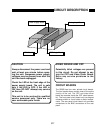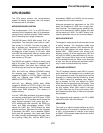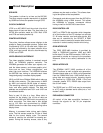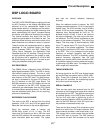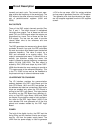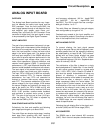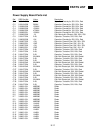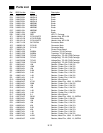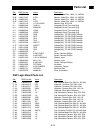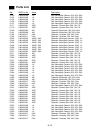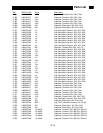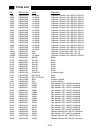
9-9
Circuit Description
OVERVIEW
The Analog Input Board provides the very impor-
tant link between the user's input signal and the
DSP processor. From the front panel BNC, the
user's signal passes through a low distortion front-
end amplifier, gain stages, notch filters, anti-
aliasing filter, and finally an A/D Converter. Once
converted to digital form, the input signal is ready
to be processed by the Digital Signal Processor.
INPUT AMPLIFIER
The goal of any measurement instrument is to per-
form some given measurement while affecting the
quantities to be measured as little as possible. As
such, the input amplifier is often the most critical
stage in the entire signal path. The design of the
front end input amplifier in the SR850 was driven
by an effort to provide optimum performance in the
following areas: input voltage noise, input current
noise, input capacitance, harmonic distortion, and
common mode rejection (CMR). To provide such
performance, a FET input differential amplifier with
common-mode feedback architecture was chosen.
The input signal is first passed through a series of
relays to select input mode and input coupling.
The input FETs U100A and U100B are extremely
low-noise matched FETs. To improve distortion
performance, the input FETs are cascoded to
maintain a constant drain-source voltage across
each FET. This prevents modulation of the drain-
source voltage by the input voltage. U109 senses
the source voltages and maintains the same volt-
age at the drains (via FETs U108A and B) with
some DC offset determined by resistors N102 and
N103. U105 provides common-mode feedback
and maintains a constant drain current in each
FET. The gain of the front end is fixed. U103 pro-
vides the output. The DC offset is adjusted by
P101 and the CMR by P102.
GAIN STAGES AND NOTCH FILTERS
Collectively, the front end amplifier and following
gain stages provide gain up to about 2000.
The notch filters are simple single stage, inverting
band pass filters summing with their inputs to
remove 60 Hz or 120 Hz. Each filter has a depth
and frequency adjustment. (60 Hz - depth:P222
and freq:P221 120 Hz - depth:P202 and
freq:P201). The 120 Hz notch filter has a configur-
able gain of either 1 or 3.17.
The notch filters are followed by two gain stages,
each configurable up to a gain of 10.
Overloads are sensed at the input amplifier and
the final amplifier outputs. Since there is no attenu-
ation in the amplifier chain, this is sufficient.
ANTI-ALIASING FILTER
To prevent aliasing, the input signal passes
through a low-pass filter so that all frequency com-
ponents greater than half the sampling frequency
are attenuated by at least 96 dB. This is accom-
plished with an 8-zero 9-pole elliptical low pass
filter. The pass band of this filter is DC to 102kHz.
The stopband begins at 154 kHz. Stopband atten-
uation is nominally 100 dB.
The architecture of the filter is based on a singly
terminated passive LC ladder filter. L's are simulat-
ed with active gyrators formed by op-amp pairs
(U311, U321, U331, U341). Passive LC ladder fil-
ters have the special characteristic of being very
tolerant of variations in component values.
Because no section of the ladder is completely iso-
lated from the other, a change in value of any
single component affects the entire ladder. The
design of the LC ladder however, is such that the
characteristics of the rest of the ladder will shift to
account for the change in such a way as to mini-
mize its effect on the ladder. Not only does this
loosen the requirement for extremely high accura-
cy resistors and capacitors, but it also makes the
filter extremely stable despite wide temperature
variations. As such, the anti-aliasing filter used in
the SR850 does not ever require calibration to
meets its specifications.
Following the anti-aliasing filter is the signal moni-
tor buffer (U386) and A/D driver stage (U301).
A/D CONVERTER
The SR850 uses a dual channel A/D converter
(U407). Each channel samples simultaneously at
ANALOG INPUT BOARD



